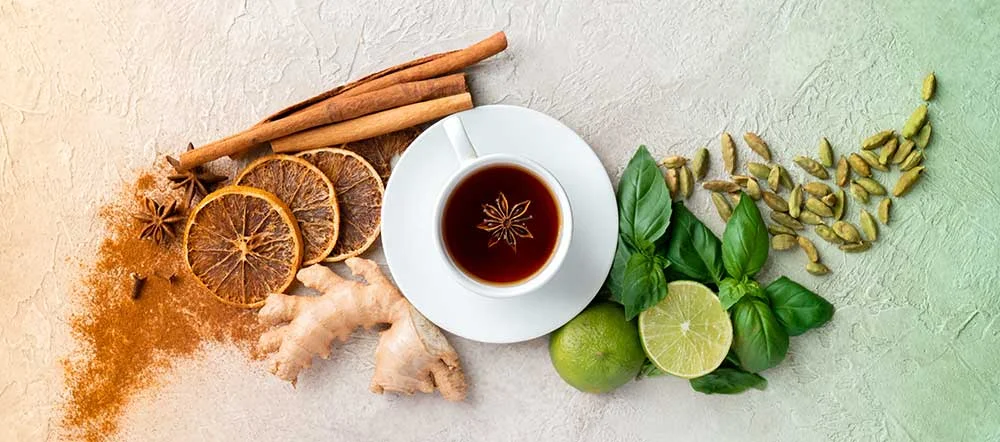
There has been a lot of interest in Indian cuisine in the last few years and we know that dishes from India are known for their bold, flavourful spices. From the warm and earthy aroma of cumin to the bright and pungent notes of coriander, Indian spices add depth and complexity to every dish. But did you know that these spices also offer a wide range of health benefits? In this article on Indian spices, we will explore their history, health benefits, and culinary uses.
Introduction to Indian spices and their history
India is known as the land of spices, and for good reason. The country has a long and rich history of spice trading, dating back to ancient times. Spices were not only used for culinary purposes but also their medicinal properties. The spice trade was so lucrative that it attracted traders from all over the world, including the Greeks, Romans, and Arabs.
Indian spices are prized for their unique flavours and aromas, which are derived from their essential oils. These oils contain compounds that may have health benefits, including anti-inflammatory and anti-bacterial properties. Some of the most popular Indian spices include turmeric, cumin, coriander, cardamom, and cinnamon.
The health benefits of Indian spices
Indian spices have been used for centuries to treat a variety of ailments. For example, turmeric has been used in Ayurvedic medicine to aid digestion and reduce inflammation.
Cumin is another spice that has been used for its health benefits. It is rich in iron, which is important for healthy blood cells and contains antioxidants.
Coriander is a staple in Indian cuisine and is known for its digestive properties. It can help reduce inflammation in the gut and may even help prevent food poisoning.
Cardamom is a popular spice that is used in both sweet and savoury dishes. Another spice used to reduce inflammation.
Cinnamon is another spice that is known for its health benefits. It can help regulate blood sugar levels and may also have anti-inflammatory properties.
Types of Indian spices and their uses in cooking
Indian spices come in many forms, including whole, ground, and paste. Whole spices are often toasted in a dry pan to bring out their flavours before being added to a dish. Ground spices are used to add flavour and colour to dishes, while pastes are used as a base for curries and other sauces.
Indian spices are used in a wide range of dishes, from mild and creamy kormas to fiery vindaloos. They are often combined with other ingredients, such as ginger, garlic, and tomato, to create complex and flavourful dishes.
The most popular Indian spices: turmeric, cumin, coriander, cardamom, and cinnamon
Turmeric is a bright yellow spice that is known for its distinctive flavour and colour. It is often used in curries and rice dishes and can also be used to flavour soups and stews.
Cumin is warm and earthy and is often used in spice blends such as garam masala and curry powder. It is also used to flavour rice dishes and lentil soups.
Coriander has a fresh, citrusy flavour that is often used to balance out spicy dishes. It is perfect in chutneys and pickles.
Cardamom is sweet and floral and is often used in desserts and sweet dishes. It is also used added to coffee and tea.
Cinnamon has a warm, sweet flavour that is often used in sweet dishes such as rice pudding and chai tea. It can also be used in savoury dishes such as biryani and pilaf.
How to incorporate Indian spices into your diet
Incorporating Indian spices into your diet is easy and delicious. Start by experimenting with different spice blends and adding them to your favourite dishes. You can also try making your own spice blends at home.
Another way to incorporate Indian spices into your diet is to try traditional Indian dishes. From butter chicken to biryani, there are countless dishes that showcase the rich flavours of Indian spices. Getting to know your spices and trying different dishes is an excellent start to using them in your own recipes.
Indian spice blends and their uses
Indian spice blends are a key component of Indian cuisine. They are often made up of a combination of spices, including cumin, coriander, turmeric, and ginger. Some popular spice blends include garam masala, curry powder, and chaat masala.
Garam masala is a blend of spices that is often used in savoury dishes. It typically contains cumin, coriander, cardamom, cinnamon, cloves, and black pepper.
Curry powder is a blend of spices that is often used to flavour curries. It typically contains cumin, coriander, turmeric, and chilli powder.
Chaat masala is a tangy spice blend that is often used to season street food. It typically contains cumin, coriander, mango powder, and black salt.
Traditional Indian dishes and their spice profiles
Indian cuisine is known for its complex and diverse flavours. From the spicy heat of vindaloo to the sweet and creamy taste of butter chicken, each dish has its own unique spice profile.
For example, butter chicken is made with a blend of spices that includes cumin, coriander, cinnamon, and cardamom. Vindaloo, on the other hand, is made with a blend of spices that includes cumin, coriander, cinnamon, and chilli powder.
Where to buy authentic Indian spices
Authentic Indian spices can be found in speciality stores and online. Look for brands that specialise in Indian spices and check the labels to ensure that the spices are pure and free from additives.
Indian spice substitutes
If you can’t find a particular Indian spice, there are several substitutes that you can use. For example, if a recipe calls for garam masala and you don’t have it, you can use curry powder instead. If a recipe calls for cardamom and you don’t have it, you can use cinnamon instead.
The power of Indian spices for your health and cooking
In conclusion, Indian spices offer a wide range of health benefits and can add depth and complexity to any dish. Whether you are a seasoned chef, or a beginner cook, incorporating Indian spices into your cooking can help elevate your dishes to the next level. So why not experiment with some of the spices and blends mentioned in this article and discover the wonders of Indian cuisine for yourself?
Try adding some Indian spices to your next dish and see how they can take your cooking to the next level or, next time you are dining out, try a different dish with new spices and seasonings.
